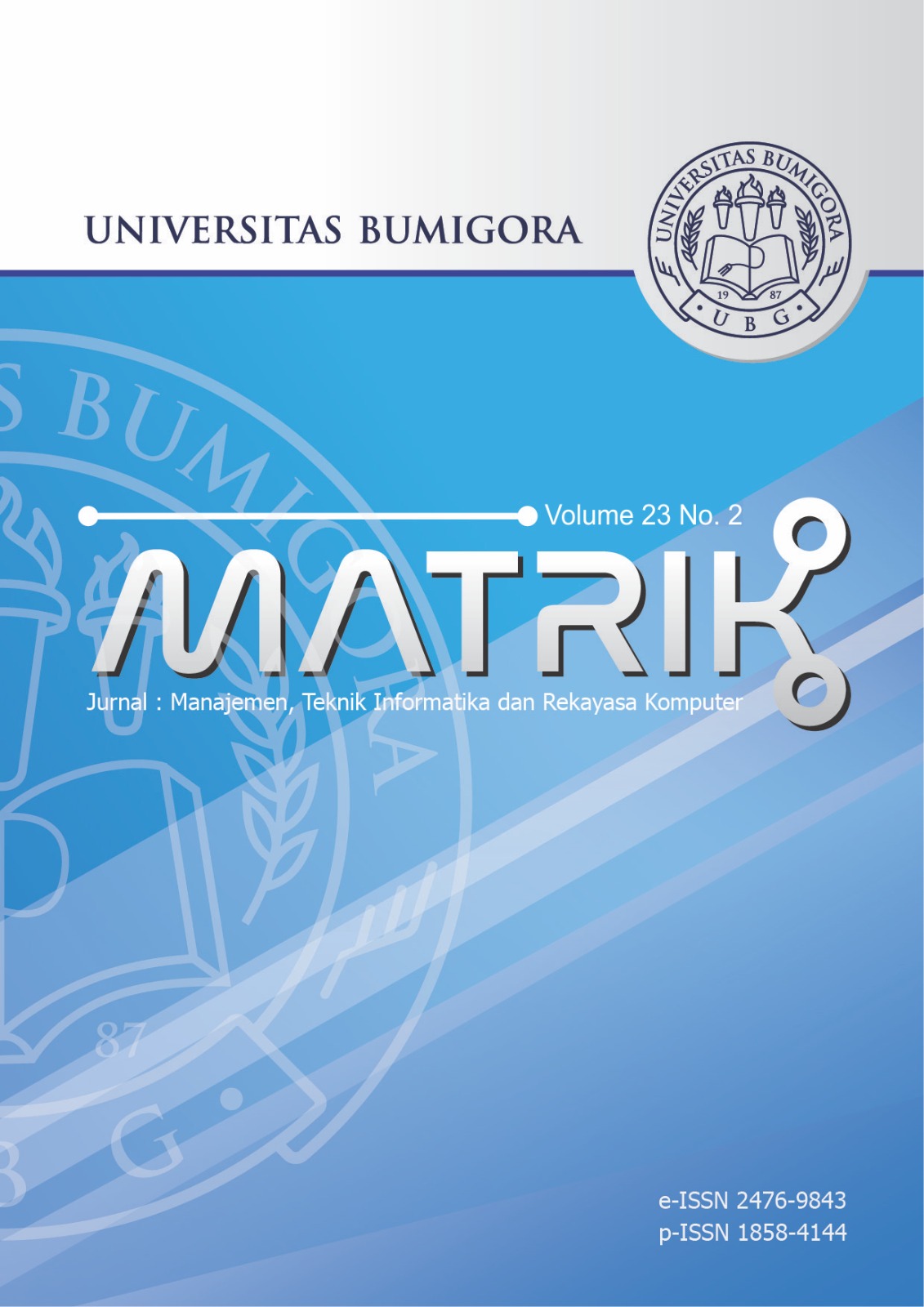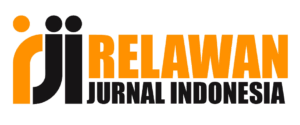Unsafe Conditions Identification Using Social Networks in Power Plant Safety Reports
DOI:
https://doi.org/10.30812/matrik.v23i2.3883Keywords:
Occupational Health and Safety, Social Network Analysis, Unsafe ConditionAbstract
Power plants in Indonesia grapple with significant challenges in managing occupational health and safety. Power generation companies urgently need to reduce workplace accidents every year and need an application for reporting every potential workplace hazard. The huge reporting data in applications such as IZAT requires thorough analysis to find out the pattern and distribution. This research aims to facilitate the company in hazard mitigation by identifying reported unsafe conditions and building a semantic association network to understand the nature of unsafe conditions between Paiton and Indramayu generating units. The research method uses social network analysis, which is carried out by preprocessing the data using programming to remove noise and then converting the data into a readable format. Then, semantic relationships between words were analyzed, and the data was visualized using the ForceAtlas2 algorithm. The findings revealed a different focus between the two units, where 6.597 reports from the Paiton generating unit mainly highlighted team response and accident-prone workplace conditions, while 5.840 reports from the Indramayu unit emphasized specific conditions, locations, and equipment that pose accident risks
Downloads
References
Springer Singapore, 2020, pp. 3–20, https://doi.org/10.1007/978-981-15-1108-0 1.
[2] B. Brenner and D. Majano, “Expanding Workplace Electrical Safety to Nonelectrical Occupations: Strategies for Reducing
Fatal Electrical Injuries,†IEEE Industry Applications Magazine, vol. 27, no. 6, pp. 76–81, nov 2021, https://doi.org/10.1109/
MIAS.2021.3065319.
[3] D. G. Fitri, H. Tolle, and H. M. Az-zahra, “Evaluasi dan Perbaikan Antarmuka Aplikasi Mobile IZAT ( Aplikasi Zero Accident
Assistant ) Bidang K3 PT PJB UP Gresik Menggunakan Metode Human-Centered Design,†Jurnal Pengembangan Teknologi
Informasi dan Ilmu Komputer, vol. 3, no. 10, pp. 9661–9670, 2019, https://doi.org/https://j-ptiik.ub.ac.id/index.php/j-ptiik/
article/view/6528/3134.
[4] E. Ratman, S. R. Karimuna, and S. K. Saptaputra, “Gambaran Tindakan Tidak Aman (Unsafe Action) Dan Kondisi Tidak
Aman (Unsafe Condition) Pada Pekerja Proyek Kantor Perakilan Bank Indonesia (KPwBI) Di Kota Kendari Tahun 2019,â€
Jurnal Kesehatan dan Keselamatan Kerja Universitas Halu Oleo, vol. 1, no. 1, pp. 28–35, jun 2020, https://doi.org/10.37887/
jk3-uho.v1i1.12615.
[5] Z. F. Olcay, S. Temur, and A. E. Sakalli, “A research on the knowledge level and safety culture of students taking occupational
health and safety course,†Cypriot Journal of Educational Sciences, vol. 16, no. 1, pp. 187–200, feb 2021, https://doi.org/10.
18844/cjes.v16i1.5519.
[6] D. Kashmiri, F. Taherpour, M. Namian, and E. Ghiasvand, “Role of Safety Attitude: Impact on Hazard Recognition and Safety
Risk Perception,†in Construction Research Congress 2020, vol. 007, no. 1994. Reston: American Society of Civil Engineers,
nov 2020, pp. 583–590, https://doi.org/10.1061/9780784482872.063.
[7] P. Kumar, S. Gupta, and Y. R. Gunda, “Estimation of human error rate in underground coal mines through retrospective analysis
of mining accident reports and some error reduction strategies,†Safety Science, vol. 123, p. 104555, mar 2020, https://doi.org/
10.1016/j.ssci.2019.104555.
[8] N. XU, L. MA, Q. Liu, L. WANG, and Y. Deng, “An improved text mining approach to extract safety risk factors from
construction accident reports,†Safety Science, vol. 138, p. 105216, jun 2021, https://doi.org/10.1016/j.ssci.2021.105216.
[9] B. U. Ayhan and O. B. Tokdemir, https://doi.org/10.1061/(ASCE)CO.1943-7862.0001762.
[10] B. Zhong, X. Pan, P. E. Love, L. Ding, andW. Fang, “Deep learning and network analysis: Classifying and visualizing accident
narratives in construction,†Automation in Construction, vol. 113, p. 103089, may 2020, https://doi.org/10.1016/j.autcon.2020.
103089.
[11] S. A. Baghaei Naeini and A. Badri, “Identification and categorization of hazards in the mining industry: A systematic review of
the literature,†International Review of Applied Sciences and Engineering, vol. 15, no. 1, pp. 1–19, jan 2024, https://doi.org/10.
1556/1848.2023.00621.
[12] A. Hasibuan, B. Purba, R. Makbul, A. Mansida, L. O. M. Y. Amsah, F. Rachim, V. Dharmawan, E. Bachtiar, P. Sumantrie,
S. Simbolon, Erdawaty, Muadzah, and R. Herno Della, “Penerapan Sistem Manajemen Keselamatan dan Kesehatan Kerja,â€
in Teknik Keselamatan dan Kesehatan Kerja, 1st ed., J. Simarmata, Ed. Indonesia: Yayasan Kita Menulis, 2020,
ch. 12, p. 204, https://doi.org/fhttps://repositori.uin-alauddin.ac.id/19792/1/2020 Book%20Chapter Teknik%20Keselamatan%
20dan%20Kesehatan%20Kerja.pdfg.
[13] N. Nurrokhman, H. Dwi Purnomo, and K. Dwi Hartomo, “Utilization of Social Network Analysis (SNA) in Knowledge Sharing
in College,†INTENSIF: Jurnal Ilmiah Penelitian dan Penerapan Teknologi Sistem Informasi, vol. 4, no. 2, pp. 259–271, aug
2020, https://doi.org/10.29407/intensif.v4i2.14460.
[14] D. Kurniawan, A. Iriani, and D. Manongga, “Pemanfaatan Social Network Analysis (SNA) Untuk Menganalisis Kolaborasi
Karyawan Pada Pt. Arum Mandiri Group,†Jurnal Transformatika, vol. 17, no. 2, p. 149, jan 2020, https://doi.org/10.26623/
transformatika.v17i2.1646.
[15] P. G. S. Anggraini and I. Yuadi, “Tren Publikasi Climate Change (Perubahan Iklim) Tahun 2020-2023 Pada Scopus,†JIPI
(Jurnal Ilmu Perpustakaan dan Informasi), vol. 8, no. 2, p. 213, nov 2023, https://doi.org/10.30829/jipi.v8i2.15917.
[16] N. Noeraida, “Perkembangan publikasi internasional bidang pemantauan radiasi tahun 2011-2019 melalui basisdata Scopus,â€
Berkala Ilmu Perpustakaan dan Informasi, vol. 16, no. 1, pp. 68–82, jun 2020, https://doi.org/10.22146/bip.v16i1.296.
[17] C. T. Reis, S. G. Paiva, and P. Sousa, “The patient safety culture: a systematic review by characteristics of Hospital Survey on
Patient Safety Culture dimensions,†International Journal for Quality in Health Care, vol. 30, no. 9, pp. 660–677, nov 2018,
https://doi.org/10.1093/intqhc/mzy080.
[18] F. N. Hasan, A. S. Aziz, and Y. Nofendri, “Utilization of Data Mining on MSMEs using FP-Growth Algorithm for Menu
Recommendations,†MATRIK : Jurnal Manajemen, Teknik Informatika dan Rekayasa Komputer, vol. 22, no. 2, pp. 261–270,
mar 2023, https://doi.org/10.30812/matrik.v22i2.2166.
[19] N. Prabowo, “Social Network Analysis for User Interaction Analysis on Social Media Regarding E-Commerce Business,†IJIIS:
International Journal of Informatics and Information Systems, vol. 4, no. 2, pp. 95–102, sep 2021, https://doi.org/10.47738/ijiis.
v4i2.106.
[20] A. Kumari, R. K. Behera, K. S. Sahoo, A. Nayyar, A. Kumar Luhach, and S. Prakash Sahoo, “Supervised link prediction using
structuredbased feature extraction in social network,†Concurrency and Computation: Practice and Experience, vol. 34, no. 13,
jun 2022, https://doi.org/10.1002/cpe.5839.
[21] M. K. Bratawisnu and A. Alamsyah, “Social Network Analysis Untuk Analisa Interaksi User Di Media Sosial Mengenai Bisnis
E-Commerce,†Almana : Jurnal Manajemen dan Bisnis, vol. 2, no. 2, pp. 107–115, aug 2018, https://doi.org/http://journal.unla.
ac.id/index.php/almana/article/view/143/107.
[22] A. J. Al-Bayati, “Impact of Construction Safety Culture and Construction Safety Climate on Safety Behavior and Safety Motivation,â€
Safety, vol. 7, no. 2, p. 41, may 2021, https://doi.org/10.3390/safety7020041.
[23] M. Mambwe, E. M.Mwanaumo,W. D. Thwala, and C. O. Aigbavboa, “Evaluating Occupational Health and Safety Management
Strategy Success Factors for Small-Scale Contractors in Zambia,†Sustainability, vol. 13, no. 9, p. 4696, apr 2021, https:
//doi.org/10.3390/su13094696.
[24] E. J. Tetzlaff, K. A. Goggins, A. L. Pegoraro, S. C. Dorman, V. Pakalnis, and T. R. Eger, “Safety Culture: A Retrospective
Analysis of Occupational Health and Safety Mining Reports,†Safety and Health at Work, vol. 12, no. 2, pp. 201–208, jun 2021,
https://doi.org/10.1016/j.shaw.2020.12.001.
[25] D. I. Af’idah, D. Dairoh, S. F. Handayani, R. W. Pratiwi, and S. I. Sari, “Sentimen Ulasan Destinasi Wisata Pulau Bali Menggunakan
Bidirectional Long Short Term Memory,†MATRIK : Jurnal Manajemen, Teknik Informatika dan Rekayasa Komputer,
vol. 21, no. 3, pp. 607–618, jul 2022, https://doi.org/10.30812/matrik.v21i3.1402.
[26] D. C. U. Lieharyani and R. Ambarwati, “Visualisasi Data Tweet di Sektor Pendidikan Tinggi Pada Saat Masa Pandemi,†Building
of Informatics, Technology and Science (BITS), vol. 4, no. 1, pp. 116–123, jun 2022, https://doi.org/10.47065/bits.v4i1.1551.
[27] Z. Hou, F. Cui, Y. Meng, T. Lian, and C. Yu, “Opinion mining from online travel reviews: A comparative analysis of Chinese
major OTAs using semantic association analysis,†Tourism Management, vol. 74, no. January, pp. 276–289, oct 2019, https:
//doi.org/10.1016/j.tourman.2019.03.009.
[28] A. N. Navisha, R. Ambarwati, and M. Hariasih, “Twitter Social Network Interaction As Customer Engagement In Competition
For E-Commerce E-Health Performance In Indonesia,†Jurnal Manajerial, vol. 10, no. 02, p. 303, jun 2023, https://doi.org/10.
30587/jurnalmanajerial.v10i02.5279.
[29] E. Muller and R. Peres, “The effect of social networks structure on innovation performance: A review and directions for
research,†International Journal of Research in Marketing, vol. 36, no. 1, pp. 3–19, mar 2019, https://doi.org/10.1016/j.ijresmar.
2018.05.003.
[30] L. Yuliana and D. Ardhyaksa, “Analysis Of Unsafe Action And Unsafe Condition Based On Occupational Health And Safety
Reporting Programs,†Journal of Global Research in Public Health, vol. 4, no. 2, pp. 78–86, 2019, https://doi.org/10.30994/
jgrph.v4i2.40.
[31] B. Fakhruddin, J. Kirsch-Wood, D. Niyogi, L. Guoqing, V. Murray, and N. Frolova, “Harnessing risk-informed data for disaster
and climate resilience,†Progress in Disaster Science, vol. 16, no. September, p. 100254, dec 2022, https://doi.org/10.1016/j.
pdisas.2022.100254.
[32] S. Azad and S. Devi, “Tracking the spread of COVID-19 in India via social networks in the early phase of the pandemic,â€
Journal of Travel Medicine, vol. 27, no. 8, pp. 1–9, dec 2020.
[33] A. S. Rachma, R. Ambarwati, and M. Yani, “Comparison of Twitter Users’ Perception of Content Marketing Effectiveness and
Service Quality in Two Online Transportation,†Almana : Jurnal Manajemen dan Bisnis, vol. 7, no. 1, pp. 134–146, apr 2023,
https://doi.org/10.36555/almana.v7i1.2132.
Downloads
Published
Issue
Section
How to Cite
Similar Articles
- Arief Hermawan, Adityo Permana Wibowo, Akmal Setiawan Wijaya, The Improvement of Artificial Neural Network Accuracy Using Principle Component Analysis Approach , MATRIK : Jurnal Manajemen, Teknik Informatika dan Rekayasa Komputer: Vol. 22 No. 1 (2022)
- Husain Husain, I Putu Hariyadi, Kurniadin Abd Latif, Galih Tri Aditya, Implementation of Port Knocking with Telegram Notifications to Protect Against Scanner Vulnerabilities , MATRIK : Jurnal Manajemen, Teknik Informatika dan Rekayasa Komputer: Vol. 23 No. 1 (2023)
- Didih Rizki Chandranegara, Faras Haidar Pratama, Sidiq Fajrianur, Moch Rizky Eka Putra, Zamah Sari, Automated Detection of Breast Cancer Histopathology Image Using Convolutional Neural Network and Transfer Learning , MATRIK : Jurnal Manajemen, Teknik Informatika dan Rekayasa Komputer: Vol. 22 No. 3 (2023)
- Baiq Rima Mozarita Erdiani, Aryo Yudo Husodo, Ida Bagus Ketut Widiartha, Novel Application of K-Means Algorithm for Unique Sentiment Clustering in 2024 Korean Movie Reviews on TikTok Platform , MATRIK : Jurnal Manajemen, Teknik Informatika dan Rekayasa Komputer: Vol. 24 No. 2 (2025)
- Akmal Setiawan Wijaya, Dhomas Hatta Fudholi, Ahmad R. Pratama, A computational approach in analyzing the empathy to online donations during COVID-19 , MATRIK : Jurnal Manajemen, Teknik Informatika dan Rekayasa Komputer: Vol. 22 No. 2 (2023)
- Tb Ai Munandar, Ajif Yunizar Yusuf Pratama, Regional Clustering Based on Types of Non-Communicable Diseases Using k-Means Algorithm , MATRIK : Jurnal Manajemen, Teknik Informatika dan Rekayasa Komputer: Vol. 23 No. 2 (2024)
- Ahmad Zein Al Wafi, Febry Putra Rochim, Veda Bezaleel, Investigating Liver Disease Machine Learning Prediction Performancethrough Various Feature Selection Methods , MATRIK : Jurnal Manajemen, Teknik Informatika dan Rekayasa Komputer: Vol. 24 No. 3 (2025)
- Angelina Ervina Jeanette Egeten, Siska A. Damanik, Ika Agustina, Marcelina Panggabean, Perancangan Sistem Informasi Posyandu Berbasis Web Pada Yayasan Kalyanamitra Di Jakarta Timur Untuk Mendukung Program Bidang Pendampingan Komunitas , MATRIK : Jurnal Manajemen, Teknik Informatika dan Rekayasa Komputer: Vol. 18 No. 2 (2019)
- Susandri Susandri, Ahmad Zamsuri, Nurliana Nasution, Yoyon Efendi, Hiba Basim Alwan, The Mitigating Overfitting in Sentiment Analysis Insights from CNN-LSTM Hybrid Models , MATRIK : Jurnal Manajemen, Teknik Informatika dan Rekayasa Komputer: Vol. 24 No. 2 (2025)
- Fiby Nur Afiana, Pungkas Subarkah, A. Kholil Hidayat, Analisis Perbandingan Metode TAM dan Metode UTAUT 2 dalam Mengukur Kesuksesan Penerapan SIMRS pada Rumah Sakit Wijaya Kusuma DKT Purwokerto , MATRIK : Jurnal Manajemen, Teknik Informatika dan Rekayasa Komputer: Vol. 19 No. 1 (2019)
You may also start an advanced similarity search for this article.


.png)












